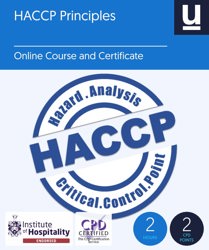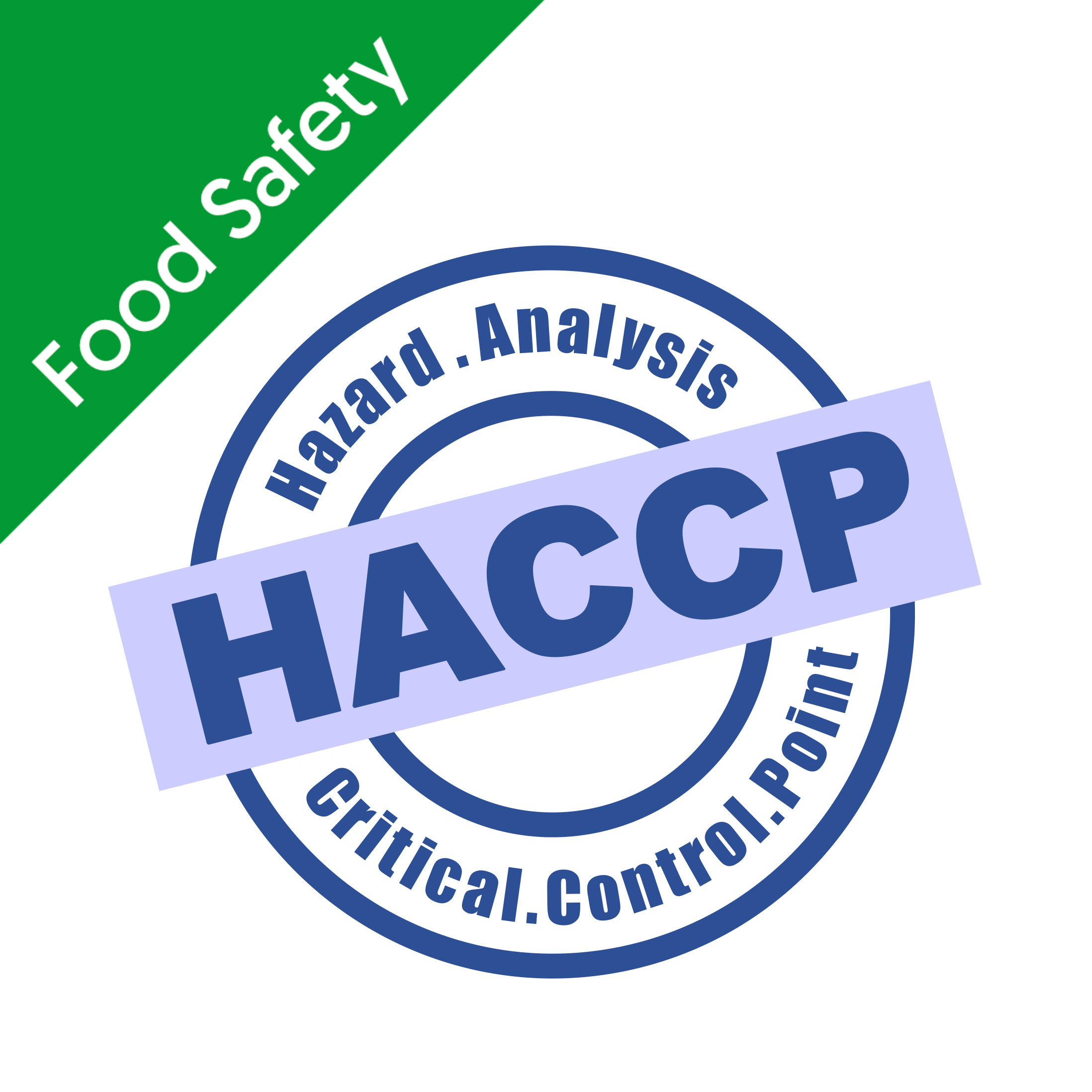35 Frequently Asked Questions About HACCP
At Commodious, we offer a range of food hygiene and safety courses, including one on the principles of HACCP. This means that we get asked several questions about HACCP, which we have answered below:
What does HACCP stand for?
HACCP stands for Hazard Analysis and Critical Control Points (HACCP).
Why is HACCP used?
HACCP is used to help food businesses create an effective food safety management system, which is important to ensure that the food they produce is safe to eat.
When was HACCP formed?
HACCP was formed in the 1960s, but it took until 1992 before it was officially adopted into the World Health Organisation's Codex Alimentarius. It has since been updated multiple times (in 2020 most recently) to make it easier to create, implement and maintain a food safety management system based on HACCP.
Where did HACCP come from?
HACCP was created after a collaboration between the Pillsbury Company, the United States Army and NASA. It was designed to ensure that any food produced for use as part of the United States space programme was safe to eat and, in the decades since, has been developed and adopted by major food businesses.
When did HACCP become law?
Using a HACCP-based food safety management system has been advised since the 1990s but became a legal requirement in 2006. It is enforced by the Food Safety and Hygiene (England) Regulations 2013, the Food Hygiene (Scotland) Regulations 2006, the Food Hygiene (Wales) Regulations 2006, and the Food Hygiene Regulations (Northern Ireland) 2006.
When did HACCP start?
HACCP was created in the 1960s, and was adopted and developed by a number of food businesses in the decades between this and its incorporation into the World Health Organisation's Codex Alimentarius in 1992 and EU law in 2006.
What are the HACCP procedures?
There are 7 HACCP principles that must be followed by food establishments in order to establish an effective food safety management system. These principles are as follows:
- Conduct a hazard analysis
- Identify and list potential hazards
- Analyse the hazards
- Specify control measures
- Determine CCPs (Critical Control Points)
- Establish critical limits
- Establish a monitoring system
- Establish a corrective action plan
- Validation, verification and review
- Documentation and record-keeping
What are the HACCP prerequisites?
There are several preparatory stages that must be completed before the principles of HACCP can be completed. Our HACCP training course identifies eight stages:
- Implement prerequisite requirements
- Obtain management commitment
- Identify the scope of the study
- Assemble the HACCP team
- Describe the product
- Identify the intended use and users
- Construct a flow diagram
- Confirm the flow diagram
What are the advantages of HACCP?
Having a HACCP-based food safety management system in place is a legal requirement, but it also helps to ensure that a business is producing safe food. This will reduce food safety incidents and, in turn, prevent any fines, legal action and reputation damage that may occur.
Who uses HACCP?
HACCP is an internationally-recognised system, which means that it is used by food businesses (such as caterers, manufacturers and retailers) across the world.
What is a HACCP plan?
A HACCP plan is a document that, among other things, explains which hazards are present in a food business, and how they will be controlled. Plans are usually linear or modular:
- Linear plans track a single product throughout the whole of its production.
- Modular plans apply to a single stage of the production process, so can be applied to multiple products.
When is a HACCP plan required?
All food businesses, including catering, manufacturing and retail businesses, are required to put in place/implement a HACCP plan. This can be complicated to do, so the Food Standards Agency and Food Standards Scotland provide several systems that can be used by small businesses to create a HACCP plan, such as Safer Food, Better Business, CookSafe and Safe Catering.
How can a HACCP plan best be implemented?
A HACCP plan will be implemented to the entire production process or to a single stage, depending on the type of plan chosen. Regardless of this, all food handlers must be aware of the plan, and it must contain effective control measures that are as simple as possible, to ensure it is implemented successfully and reduce the chance of errors.
Is HACCP mandatory?
Yes, having a food safety management system in place that is based on the principles of HACCP is a legal requirement in the UK.
Is HACCP a government agency?
No, HACCP is a set of food safety management principles that food businesses must use to ensure that they are creating food that is safe to eat.
When was HACCP introduced in the UK and Ireland?
HACCP became a legal requirement in the UK and Ireland in 2006, when EU Regulation (EC) 852/2004 came into effect. While the UK has left the EU, this regulation was retained and became part of UK law, meaning that all food businesses in the UK are still required to have a HACCP-based food safety management system in place.
How often should HACCP be reviewed?
A HACCP system should be reviewed regularly, such as annually. It should also be reviewed if there has been a change to the process (such as a new ingredient or machine being used) or if a food safety incident has occurred.
How long should HACCP records be kept?
Food businesses are required to keep accurate and adequate records about their food safety management system. How long these records are kept will vary depending on several factors, including the type of record and the specific foods being produced.
It is recommended that these records be stored electronically, allowing them to be stored for very long periods of time with ease.
Where can I get a HACCP certificate?
At Commodious, we offer a HACCP Principles course that covers creating, implementing, and maintaining a HACCP-based food safety management system. Completing this course will also lead to the issue of an Institute of Hospitality and CPD endorsed certificate.
Who needs HACCP certification?
All food business owners and managers should have a HACCP certificate, as should anyone who is part of the HACCP team and/or is responsible for creating a HACCP system.
Do HACCP certificates expire?
HACCP certificates do not expire, but it is recommended that those with a HACCP certificate take refresher training every three years to make sure that their knowledge is up-to-date.
How much does HACCP certification cost?
The cost of HACCP certification varies between providers, and how they offer their courses. Our HACCP Principles course is only £15+VAT.
Can I do a HACCP course online?
Yes, our HACCP Principles course is taught and assessed online, which means it can be completed at any time, minimising business disruption.
What are the 4 types of food hazards?
The four types of food hazards are:
- Physical
- Chemical
- Allergens
- Microbiological
What is a HACCP control point?
A critical control point is a point of the food production process at which control measures are required to reduce or eliminate a food safety hazard.
What is a critical limit in HACCP?
A critical limit is a value assigned to a critical control point that can be monitored to determine whether the hazard has been sufficiently controlled.
For example, a food item may need to be heated before being packed to kill any bacteria present on it. The HACCP plan will determine a temperature (such as 80°C) that the item must reach before it is considered safe, which can be monitored for. Any items that fail to reach this limit should be discarded.
What are examples of HACCP control measures?
A control measure is any action taken to reduce or eliminate a hazard that could affect the safety of the food being produced. This could include cooking an item to a certain temperature, cooling it within a certain time, using a metal detector, using pre-approved suppliers, or using dedicated equipment to handle food that contains allergens.
What is a HACCP flow chart?
A HACCP flow chart is a diagram that shows all of the production process steps being studied. This diagram should include details of any equipment used, as well as any relevant technical data such as temperatures, times, and flow durations.
What is a HACCP decision tree?
A decision tree is a diagram used to identify the critical control points present in the food production process. An example of a decision tree is shown below:
When can HACCP be used in the food chain?
HACCP can and should be used by all businesses in the food chain, including those that process raw materials and create ingredients that are used by other food businesses. By doing so, they will be helping to ensure that the final product is safe to consume, even if they are not the ones creating it.
How is HACCP used in the food industry?
HACCP is a system used by all food businesses, including catering, manufacturing and retail businesses, to ensure that they maintain good food hygiene standards and produce food that is safe to eat. It does so by requiring these businesses to identify and control all food safety hazards that are present in their workplace.
Why would the HACCP team check an oven?
A HACCP team may check an oven to ensure that it is clean and operating at the temperature required to ensure that the food produced by it is safe.
How can HACCP be used in the hospitality industry?
Any business in the hospitality industry that handles or prepares food on-site must have a HACCP-based food safety management system in place to ensure that this food is safe.
Is HACCP a quality management system?
HACCP is not a quality management system.
However, ISO 22000 is a management standard created by the International Organization for Standardization that sets out how a good food safety management system should look. Among other things, this standard requires food businesses to follow the principles of HACCP and combine them with prerequisite programmes. For more information on ISO 22000, click here to visit the ISO website.
How is CCP calculated?
Critical control points are not calculated, they are identified using tools such as a decision tree. However, each critical control point should have a critical value (or set of values) assigned to it, which should be calculated or selected using government and industry guidance.
For more information on HACCP, TACCP and VACCP, consider taking our courses below:







